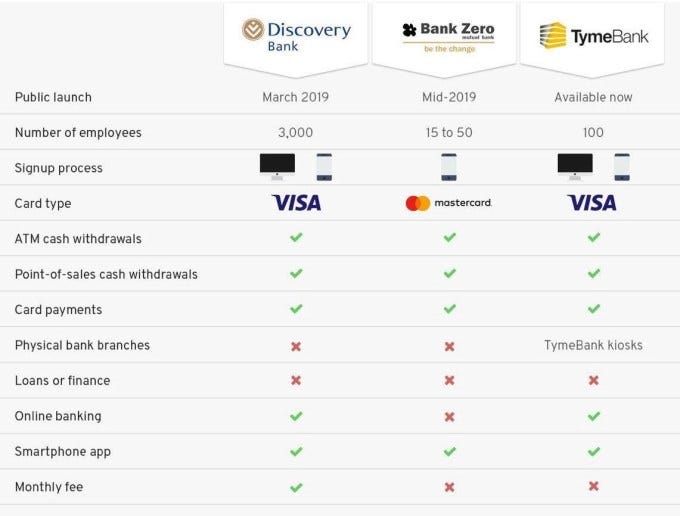3-year-old South African Digital Bank, TymeBank, Surpasses 4m Customer Mark
TymeBank, a three-year-old retail digital bank, has surpassed the four million customer threshold, marking a significant milestone for the company.
The bank claims that its client acquisition rate is increasing, with 140 000 new customers onboarded weekly, up from roughly 110 000 previously.

Read also Egyptian Fintech Startup, Sympl, Secures Funding From A15
TymeBank, which is majority-owned by African Rainbow Capital, Dr Patrice Motsepe’s empowerment investment firm, says the increase in customer sign-ups is due to its offerings and cost transparency.
“We are pleased to have achieved a four million customer base within about 32 months. We’ve expanded our offering and enhanced product functionality to ensure we can give customers everything they need in a single banking account, while empowering them to pay nothing — or next to nothing — on banking fees, depending on their banking behaviour. The acceleration in customer growth tells us we’re on the right track,” says TymeBank CEO Tauriq Keraan.
“TymeBank’s hybrid model of digital banking and physical service points is what sets us apart, which is why more than 80% of accounts are opened at our instore kiosks. That said, we’re seeing more customers making use of our digital channels, which is in line with the rapid growth in digital adoption among ordinary South Africans, largely driven by the COVID-19 pandemic, as well as increasing trust and confidence in digital banking.”
TymeBank has recently embarked on an aggressive expansion strategy, which includes raising new cash and signing various agreements with retailers.
It formed relationships with Pick n Pay and Boxer, and claims that these alliances have helped it attract clients and increase usage.
The bank inked a contract with TFG (The Foschini Group) last month, aiming to reach the fashion retailer’s 26 million clients.
Read also A Month After Investing In TymeBank, Apis Partners Quits African Payments Company Tutuka Holdings
TymeBank established a collaboration with the Zion Christian Church in February 2020, giving it the possibility to sign up members of the congregation’s 12 million members.
“As TymeBank management, we are proud of what the bank has achieved in the last 32 months. We have four million customers, strategic partnerships with three South African retail giants, as well as the Zion Christian Church, and have attracted significant investments from major international investors. We’re poised for further growth and there’s an exciting future ahead,” Keraan said.
A Look At What TymeBank Does
Launched in 2019 by founders Coen Jonker, Rolf Eichweber, Tjaart van der Waalt, TymeBank is South Africa’s first digital bank. In February 2019, the bank launched its EveryDay transactional account bundled with a savings tool called GoalSave, its MoneyTransfer solution, and its TymeCoach App, which gives consumers free access to their credit report, supported by tips on how to make better decisions about the money.

Since its formal launch in 2019, TymeBank has seen a tremendous increase in customers and has reinforced its position locally to better compete with digital-only competitors Discovery Bank and Bank Zero.
digital bank TymeBank customer digital bank TymeBank customer
Charles Rapulu Udoh

Charles Rapulu Udoh is a Lagos-based lawyer who has advised startups across Africa on issues such as startup funding (Venture Capital, Debt financing, private equity, angel investing etc), taxation, strategies, etc. He also has special focus on the protection of business or brands’ intellectual property rights ( such as trademark, patent or design) across Africa and other foreign jurisdictions.
He is well versed on issues of ESG (sustainability), media and entertainment law, corporate finance and governance.
He is also an award-winning write







